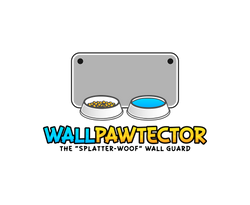Unleashing the Potential: Exploring the Dynamic Dog Food Market
Introduction:
In the ever-evolving landscape of pet care, one segment stands out as particularly fascinating and dynamic: the dog food market. From the days of generic kibble to today's gourmet selections, this market has witnessed a remarkable transformation driven by evolving consumer preferences, advancements in nutrition science, and a growing awareness of pet health and wellness. Let's take a closer look at the trends, innovations, and factors shaping the dog food market today.
1. Shifting Consumer Preferences:
Modern pet owners view their furry companions as cherished family members, leading to a rise in demand for high-quality, nutritious dog food options. There's a noticeable shift away from traditional, mass-produced brands towards premium and specialized products. Health-conscious consumers are increasingly seeking out organic, grain-free, and natural formulations, reflecting a broader trend toward clean eating and sustainable practices.
2. Rise of Customization and Personalization:
Just as humans have diverse dietary needs, so do our canine companions. Recognizing this, many companies are offering customizable and personalized dog food solutions tailored to individual breeds, sizes, ages, and health conditions. This trend aligns with the growing emphasis on personalized nutrition in human diets and underscores the importance of targeted nutrition for optimal pet health and vitality.
3. Emphasis on Functional Ingredients:
In line with the wellness movement, dog food manufacturers are incorporating functional ingredients known for their health benefits. From probiotics and prebiotics to omega-3 fatty acids and antioxidants, these additives aim to support digestion, immune function, joint health, and overall well-being. Moreover, ingredients such as turmeric, blueberries, and pumpkin are gaining popularity for their natural healing properties.
4. Expansion of Alternative Proteins:
As concerns about sustainability and animal welfare continue to influence consumer choices, the dog food market is witnessing a surge in alternative protein sources. Beyond traditional meat-based formulations, options like plant-based proteins (e.g., peas, lentils, chickpeas) and insect-based ingredients are gaining traction. These alternatives offer sustainable protein options without compromising on nutritional quality, appealing to eco-conscious pet owners.
5. Technological Innovations:
Advancements in technology are revolutionizing the way dog food is formulated, manufactured, and delivered. From 3D printing of customized kibble to AI-driven nutrition analysis and smart feeding devices, pet tech is reshaping the industry landscape. These innovations not only enhance convenience for pet owners but also enable better tracking of dietary intake and health metrics, fostering greater transparency and accountability.
6. E-commerce and Direct-to-Consumer Channels:
The proliferation of e-commerce platforms and direct-to-consumer (DTC) models has democratized access to premium dog food products. Pet owners can now conveniently browse and purchase a wide range of options online, bypassing traditional brick-and-mortar retailers. This shift towards digital channels has empowered smaller, niche brands to reach a broader audience and compete with established players, driving further innovation and diversity in the market.
Conclusion:
The dog food market is a vibrant and rapidly evolving industry shaped by changing consumer preferences, scientific advancements, and technological innovations. As pet owners continue to prioritize the health and well-being of their canine companions, the demand for premium, customized, and sustainable dog food options will only continue to grow. With an emphasis on quality ingredients, personalized nutrition, and ethical sourcing, the future of the dog food market holds promise for both pets and their devoted human companions.
